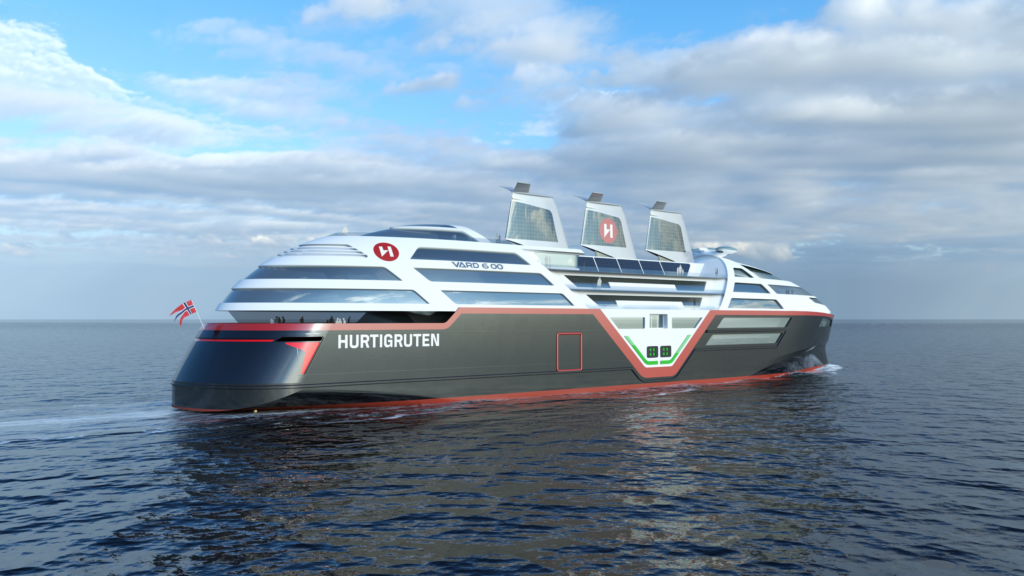Hurtigruten Norway Unveils its First Zero-Emission Cruise Ship

Launching in 2030, the world’s most energy-efficient cruise ship will use 60 MWh batteries, retractable sails with solar panels, and A.I. maneuvering to eliminate emissions
Weeks before its 130th anniversary, Hurtigruten Norway unveiled plans for its first zero-emission ship. Initially announced in March 2022, under project name ‘Sea Zero,’ the initiative has now revealed early concept plans and renderings for the world’s most energy-efficient cruise ship following its first year of research. Hurtigruten Norway presented the findings alongside its consortium of 12 maritime partners and research institute SINTEF, all joined in the pursuit of achieving emission-free marine travel.
“Following a rigorous feasibility study, we have pinpointed the most promising technologies for our groundbreaking future cruise ships. We are committed to delivering a ship that surpasses all others in terms of energy efficiency and sustainability within just a few years,” said Hedda Felin, CEO of Hurtigruten Norway.
With 0.1% of ships worldwide currently using zero-emission technology, Hurtigruten Norway’s project aims to drastically improve the cruise industry’s sustainability record and future of travel. The cruise line’s future, electric ships will be equipped with batteries that are charged with renewable energy while in port. Combining 60-megawatt batteries with wind technology, the ship is expected to feature numerous firsts that do not exist on ships today, including retractable sails with solar panels, artificial intelligence maneuvering, contra-rotating propellers, and multiple retractable thrusters.
See related article: EU, Norway Plan Cooperation on Carbon Capture and Renewable Hydrogen
Battery levels will be displayed on the ship’s exterior, while the bridge, where the Captain and crew steer the ship, is expected to reduce in size following enhanced A.I. maneuvering, mimicking that of an airplane cockpit. Retractable, autonomous wing rigs will comprise 1500m² (16,146 ft²) of solar panels and a wind surface of 750m² (8,073ft²), reaching a maximum height of 50m (164 ft) when extended. The streamlined shape results in less air resistance, reducing energy use. Guests will also minimize their own energy consumption through an interactive mobile app.
To enter Norwegian waters by 2030, the vessel must enter shipyard production in 2027, with new-build finalization starting in 2026. The current R&D phase focuses on battery production, propulsion technology, hull design, and sustainable building practices that reduce energy use to a minimum. Developing new technologies for onboard hotel operations, which can consume up to 50% of the ship’s total energy consumption, will be crucial.
The zero-emission ship is modeled at 135 meters (443 feet) long, with 270 cabins that hold 500 guests and 99 crew. As Hurtigruten Norway has been transporting cargo along Norway’s coast for 130 years, the new ship will have a cargo hold and transport cars.












